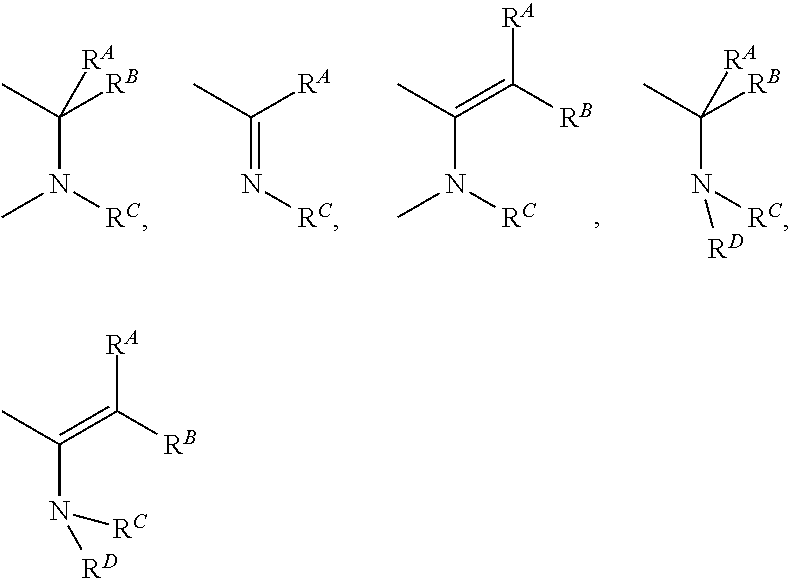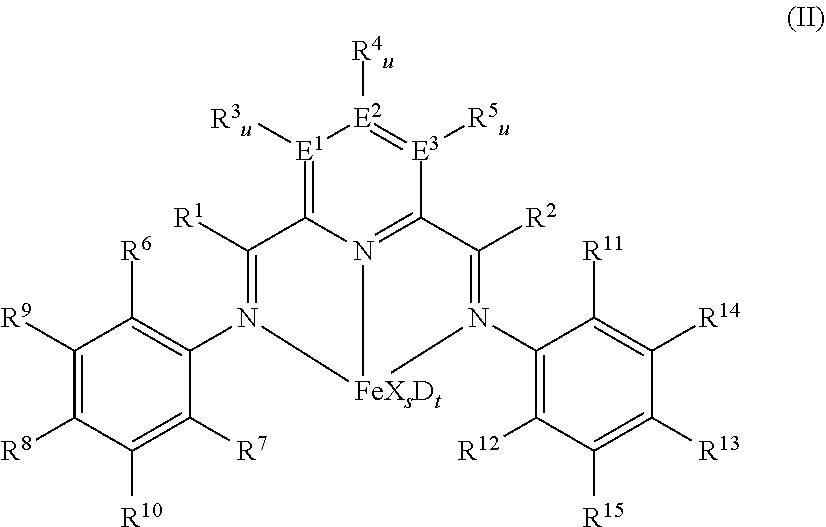Method for transitioning between incompatible olefin polymerization catalyst systems
a technology of olefin polymerization and catalyst system, which is applied in the field of transitioning between incompatible olefin polymerization catalyst system, can solve the problems of high labor intensity, unacceptably long stop time, and discontinuation of the polymerization process, and achieve quick and reliable change of production and reduce fines
- Summary
- Abstract
- Description
- Claims
- Application Information
AI Technical Summary
Benefits of technology
Problems solved by technology
Method used
Image
Examples
example 1
First Catalyst System
[0216]As first catalyst system, A Ziegler-Natta catalyst system comprising Avant Z218-1, commercially available from Basell, as catalyst component and tri-isobutyl aluminum as activating agent (TIBAL, 10 wt % solution in hexane) was used.
example 2
Second Catalyst System
[0217]As second catalyst system, a mixed catalyst system based on an iron-bisimine complex as non-metallocene component and on a hafnocene as metallocene component as described in the following was used.
[0218]As a pretreatment of the support, Sylopol 2326®, a spray-dried silica gel from Grace, was calcinated at 600° C. for 6 h.
[0219]2,6-Bis[1-(2-chloro-4,6-dimethylphenylimino)ethyl]pyridine was prepared as described in example 2 of WO 98 / 27124 and was used to synthesize 2,6-diacetylpyridinbis(2-dichloro-4,6-dimethylphenylanil) iron dichloride by using iron(II)chloride as described in example 8 of WO 98 / 27124.
[0220]Bis(n-butylcyclopentadienyl)hafnium dichloride [M=491.84 g / mol] was purchased from Crompton, Bergkamen.
[0221]A mixture of 6.77 g (11.98 mmol) of 2,6-diacetylpyridinbis(2-chloro-4,6-dimethylphenylanil) iron dichloride prepared as above, and 82.67 g (127.3 mmol) of bis(n-butylcyclopentadienyl)hafnium dichloride and 5.31 l MAO (4.75 M in toluene, 25.2 mo...
example 3
First Polymerization Reaction Using the First Catalyst System
[0223]Feed streams of ethylene, hydrogen, propane and butene were introduced into the recycle gas line. The catalyst system of Example 1 was used.
[0224]The Ziegler-Natta catalyst component was introduced into the reactor via a precontacting vessel. Liquid propane and TIBAL were also fed continuously to the vessel. The flow rates of ethylene, hydrogen and butene were controlled to maintain gas composition target values. The concentrations of all gases were measured by an online gas cromatograph.
[0225]The feed rate of the catalyst was adjusted to maintain the production rate. A superficial gas velocity was kept at 0.45 m / s to keep the reactor in a fluidized state. The reactor was operated at a pressure of 25 bar and at a temperature of the reactor exit at 80° C. The bed mass was kept substantially constant by removing discontinuously product from the reactor. The product was discharged into a discharge vessel and the gases w...
PUM
| Property | Measurement | Unit |
|---|---|---|
| melting temperature Tm | aaaaa | aaaaa |
| temperature | aaaaa | aaaaa |
| temperature | aaaaa | aaaaa |
Abstract
Description
Claims
Application Information
 Login to View More
Login to View More - R&D
- Intellectual Property
- Life Sciences
- Materials
- Tech Scout
- Unparalleled Data Quality
- Higher Quality Content
- 60% Fewer Hallucinations
Browse by: Latest US Patents, China's latest patents, Technical Efficacy Thesaurus, Application Domain, Technology Topic, Popular Technical Reports.
© 2025 PatSnap. All rights reserved.Legal|Privacy policy|Modern Slavery Act Transparency Statement|Sitemap|About US| Contact US: help@patsnap.com



